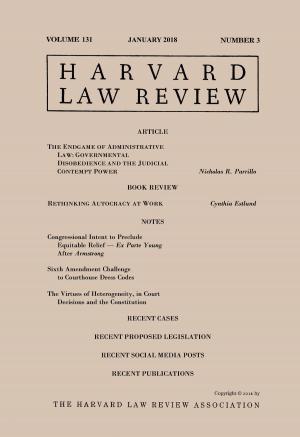The Building of Castello de San Marcos
National Park Service Interpretive Series, History No. 1
Nonfiction, History, Americas, United States, State & Local, Reference & Language, Reference| Author: | Albert C. Manucy | ISBN: | 1230000278499 |
| Publisher: | UNITED STATES GOVERNMENT PRINTING OFFICE WASHINGTON | Publication: | November 6, 2014 |
| Imprint: | Language: | English |
| Author: | Albert C. Manucy |
| ISBN: | 1230000278499 |
| Publisher: | UNITED STATES GOVERNMENT PRINTING OFFICE WASHINGTON |
| Publication: | November 6, 2014 |
| Imprint: | |
| Language: | English |
Example in this ebook
FLORIDA AND THE PIRATES
A Pirate Raid forced the Queen of Spain to build Castillo de San Marcos in Florida. On May 28, 1668, a sailing vessel appeared off the shallow bar of St. Augustine Harbor. It was a ship from Vera Cruz, bringing a supply of flour from New Spain to feed the poverty-stricken soldiers and settlers in Spanish Florida. Out went the harbor launch to put the bar pilot aboard. The crew of the launch hailed the Spanish seamen lining the gunwale of the supply ship, and to the routine questions came the usual answers: Friends from New Spain—come aboard. The launch fired a prearranged two shots telling the Governor that the vessel was recognized, then she warped alongside and tied up. Not until then did a strange crew swarm out from hiding and level their guns at the chests of the men in the launch. There was nothing for them to do but surrender. Worst of all, the reassuring signal had already been given. No one in the fortified town of St. Augustine could suspect the presence of pirates.
The invaders waited until midnight, when the presidio was asleep. Quietly they rowed ashore in small boats. Scattering through the streets, shouting, cursing, firing their guns, the hundred of them made such an uproar that the bewildered Spaniards dashing out of their homes thought there were many more. Governor Guerra emerged from his house and with the pirates pounding at his heels, he joined the guard in the race for the old wooden fort. Behind those rotten walls with 33 men, he somehow beat off several assaults. By daybreak his little force was reduced to 28.
Defense of the town itself was the charge of Sgt. Maj. Nicolás Ponce de León and some 70 soldiers. In the darkness the pirates fired effectively at the burning matches of the Spanish harquebusiers (soldiers with matchlock guns), and Ponce and his men fled to the woods. More than half a hundred Spaniards were killed as they ran from their homes into the confusion of the narrow streets. Many others were wounded on their way to the shelter of the forest. The pirates were left in complete possession of the settlement.
When daylight came, a previously hidden enemy warship put in an appearance and anchored with the captured supply boat just beyond range of the fort guns. Meanwhile, the pirates systematically sacked the town. No structure was neglected, from humble thatched dwelling to royal storehouse, hospital, and church, though the things carried off were worth but a few thousand pesos, for the town was poor. Powerless to do more, the Governor made the futile gesture of sending a sortie out from the fort. Those brave soldiers managed to get in a few shots at the already departing pirate boats.
The pirates left their prisoners at the presidio, and these unfortunates were able to explain the daring raid. It went back to the argument Governor Guerra had had with the presidio’s French surgeon some time before. That disgruntled doctor was captured on his way to Havana by the pirates, who had already seized the supply ship from Vera Cruz. Seeing a chance for revenge on Guerra, the Frenchman conferred with his captors, apparently suggested the raid, and gave them the information they needed to work out a plan. Nor was this the only news from the prisoners. The invaders were the English. Furthermore, they had carefully sounded the bar, taken its latitude, and noted the landmarks with the avowed intent of returning in force to seize the fort and make it a base for their raids on commerce in the Bahama Channel. The fact that they did not leave the town in ashes lent credence to this report.
To be continue in this ebook...............................................................................................................
Example in this ebook
FLORIDA AND THE PIRATES
A Pirate Raid forced the Queen of Spain to build Castillo de San Marcos in Florida. On May 28, 1668, a sailing vessel appeared off the shallow bar of St. Augustine Harbor. It was a ship from Vera Cruz, bringing a supply of flour from New Spain to feed the poverty-stricken soldiers and settlers in Spanish Florida. Out went the harbor launch to put the bar pilot aboard. The crew of the launch hailed the Spanish seamen lining the gunwale of the supply ship, and to the routine questions came the usual answers: Friends from New Spain—come aboard. The launch fired a prearranged two shots telling the Governor that the vessel was recognized, then she warped alongside and tied up. Not until then did a strange crew swarm out from hiding and level their guns at the chests of the men in the launch. There was nothing for them to do but surrender. Worst of all, the reassuring signal had already been given. No one in the fortified town of St. Augustine could suspect the presence of pirates.
The invaders waited until midnight, when the presidio was asleep. Quietly they rowed ashore in small boats. Scattering through the streets, shouting, cursing, firing their guns, the hundred of them made such an uproar that the bewildered Spaniards dashing out of their homes thought there were many more. Governor Guerra emerged from his house and with the pirates pounding at his heels, he joined the guard in the race for the old wooden fort. Behind those rotten walls with 33 men, he somehow beat off several assaults. By daybreak his little force was reduced to 28.
Defense of the town itself was the charge of Sgt. Maj. Nicolás Ponce de León and some 70 soldiers. In the darkness the pirates fired effectively at the burning matches of the Spanish harquebusiers (soldiers with matchlock guns), and Ponce and his men fled to the woods. More than half a hundred Spaniards were killed as they ran from their homes into the confusion of the narrow streets. Many others were wounded on their way to the shelter of the forest. The pirates were left in complete possession of the settlement.
When daylight came, a previously hidden enemy warship put in an appearance and anchored with the captured supply boat just beyond range of the fort guns. Meanwhile, the pirates systematically sacked the town. No structure was neglected, from humble thatched dwelling to royal storehouse, hospital, and church, though the things carried off were worth but a few thousand pesos, for the town was poor. Powerless to do more, the Governor made the futile gesture of sending a sortie out from the fort. Those brave soldiers managed to get in a few shots at the already departing pirate boats.
The pirates left their prisoners at the presidio, and these unfortunates were able to explain the daring raid. It went back to the argument Governor Guerra had had with the presidio’s French surgeon some time before. That disgruntled doctor was captured on his way to Havana by the pirates, who had already seized the supply ship from Vera Cruz. Seeing a chance for revenge on Guerra, the Frenchman conferred with his captors, apparently suggested the raid, and gave them the information they needed to work out a plan. Nor was this the only news from the prisoners. The invaders were the English. Furthermore, they had carefully sounded the bar, taken its latitude, and noted the landmarks with the avowed intent of returning in force to seize the fort and make it a base for their raids on commerce in the Bahama Channel. The fact that they did not leave the town in ashes lent credence to this report.
To be continue in this ebook...............................................................................................................















